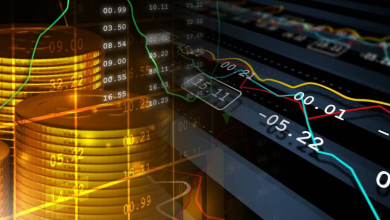Introduction to Forex Trading

GET READY TO START YOUR EXCITING JOURNEY (Section 1)
Forex trading is the buying and selling of currencies with the goal of making a profit. It is the largest financial market in the world, with an average daily trading volume of over $6 trillion.
OVERVIEW OF FOREX TRADING AND ITS BENEFITS
Forex trading, also known as foreign exchange trading or currency trading, is the process of buying and selling currencies in the global market. The Forex market is the largest and most liquid market in the world, with over $5 trillion traded daily.
Forex trading has many benefits, including:
- High Liquidity: The Forex market is highly liquid, meaning that traders can enter and exit trades quickly and easily, without the risk of price manipulation.
- Accessibility: The Forex market is accessible to traders of all levels and backgrounds, with many brokers offering low minimum deposit requirements and demo accounts for beginners.
- Profit Potential: Forex trading offers the potential for high profits, as traders can profit from both rising and falling currency prices.
- Diversification: Forex trading allows traders to diversify their investment portfolios, as it provides exposure to a range of global currencies and economies.
- 24/7 Trading: The Forex market is open 24 hours a day, five days a week, providing traders with the flexibility to trade at any time.
Examples of Forex trading include buying the Euro (EUR) and selling the US Dollar (USD) in anticipation of a rise in the EUR/USD exchange rate, or buying the Japanese Yen (JPY) and selling the Australian Dollar (AUD) to take advantage of a weakening Australian economy. Overall, Forex trading provides an opportunity for traders to profit from global economic events and trends, making it a popular choice among investors around the world.
UNDERSTANDING FOREX MARKET PARTICIPANTS
To understand the Forex market, it is important to understand the different types of participants involved in trading currencies. These include:
- Commercial Banks: Commercial banks are the largest players in the Forex market, as they trade currencies to facilitate international trade and investment. They also provide currency exchange services to their clients.
- Central Banks: Central banks are responsible for setting monetary policy and managing their country’s currency reserves. They can also intervene in the Forex market to control exchange rates and stabilize their currency.
- Hedge Funds and Investment Firms: Hedge funds and investment firms trade currencies on behalf of their clients, using a variety of strategies to profit from market movements.
- Retail Traders: Retail traders are individual traders who trade Forex through online brokers. They make up a small percentage of the overall Forex market, but have grown in popularity in recent years due to the accessibility and low entry barriers of online trading.
- Corporations: Corporations that operate internationally may engage in Forex trading to manage their currency risks and exposure to foreign markets.
Examples of Forex market participants in action include a commercial bank buying US Dollars to facilitate the import of goods from the United States, a hedge fund buying Japanese Yen in anticipation of a rise in the Yen’s value, or a retail trader using leverage to buy the Euro and sell the Swiss Franc in a short-term trade. Understanding the different types of Forex market participants and their motivations is key to understanding the dynamics of the market and making informed trading decisions.
BASIC CONCEPTS OF FOREX TRADING, INCLUDING CURRENCY PAIRS, PIPS, AND SPREADS
Forex trading involves the buying and selling of currencies in pairs, and it is important to understand some basic concepts in order to trade successfully. These concepts include:
- Currency Pairs: In Forex trading, currencies are traded in pairs, such as the Euro/US Dollar (EUR/USD) or the British Pound/Japanese Yen (GBP/JPY). The first currency in the pair is known as the base currency, while the second currency is known as the quote currency. The exchange rate of a currency pair represents the value of the base currency in terms of the quote currency.
- Pips: A pip is the smallest unit of measurement in Forex trading and represents the fourth decimal place in most currency pairs. For example, if the EUR/USD exchange rate moves from 1.1800 to 1.1805, it has moved 5 pips. Pip movements can represent significant gains or losses in Forex trading, depending on the size of the position and the leverage used.
- Spreads: The spread is the difference between the bid price (the price at which a trader can sell a currency pair) and the ask price (the price at which a trader can buy a currency pair). Spreads can vary between currency pairs and brokers, and can have a significant impact on trading profitability.
For example, if the EUR/USD exchange rate is 1.1800/1.1802, the spread is 2 pips. A trader who buys the pair at the ask price of 1.1802 would need the exchange rate to rise by at least 2 pips in order to break even. Understanding these basic concepts is essential for any Forex trader, as they provide the foundation for analyzing market movements and making informed trading decisions.




